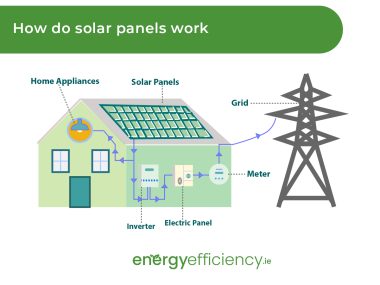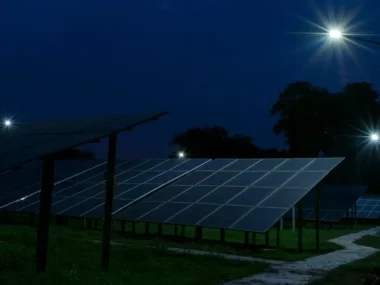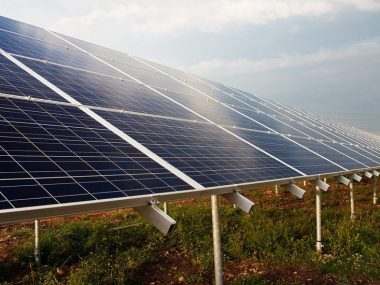Parallel connected solar panels involve linking multiple solar panels together side by side, enabling them to collaborate in generating electricity. In this setup, all positive terminals of the panels are connected together, as are all negative terminals. This setup boosts the total current output of the system while maintaining the voltage level equivalent to that of a single panel.
This configuration offers several benefits:
- Enhanced Current: By interconnecting panels in parallel, the system’s total current output is heightened. This proves advantageous in scenarios necessitating high current, such as charging batteries or operating devices with substantial power requirements.
- Redundancy: Should one panel within a parallel arrangement be shaded or encounter a malfunction, the remaining panels can continue producing electricity with minimal impact on the overall system output.
- Simplified Installation: Parallel connection streamlines the wiring process compared to series connection, as all positive and negative terminals can be directly linked together.
However, several factors should be considered when employing parallel connected solar panels:
- Voltage Consistency: Ensuring uniform voltage outputs across all panels is crucial to prevent uneven power distribution. Panels with significantly disparate voltages may not operate efficiently when connected in parallel.
- Current Uniformity: Panels with varying current outputs may lead to issues like power losses or overheating when connected in parallel. It’s advisable to use panels with similar current ratings for parallel connections.
- Shading Effects: Differently shaded panels, such as those obstructed by trees or structures, may diminish the overall system output. Strategic placement of panels can help mitigate shading effects.
In summary, parallel connected solar panels present a flexible and reliable means to augment/the current output of a solar energy system, offering adaptability and backup in both off-grid and grid-tied setups.
How Parallel Connected Solar Panels Produce More Current
Understanding the mechanism behind parallel connected solar panels and their ability to increase current output is crucial, as the current-voltage (I-V) characteristics of a solar PV panel are fundamental operating parameters. The current output of a solar panel, or cell, is largely dependent on factors such as surface area, efficiency, and the level of irradiance (sunlight) it receives.
As discussed in various alternative energy resources, photovoltaic solar panels function as semiconductor devices that convert sunlight into direct current (DC) electrical energy. Linking PV panels in parallel enhances current and consequently power output, as electrical power (in watts) equals the product of voltage and amperage (P = V x I).
Photovoltaic cells typically produce power at around 0.5 to 0.6 volts DC, with current directly proportional to the cell’s area and the amount of irradiance. However, it’s the resistance of the connected load that ultimately determines the amount of amperage supplied by a panel or PV cell.
Amperage, often referred to as “amps,” measures the rate of electrical charge flowing through a fixed point within a circuit, meaning higher charge results in greater current.
Irradiance denotes the solar radiation received at a specific area on Earth, so as the current demand from a cell rises, brighter sunlight (measured in watts per square meter, W/m2) is necessary to achieve full output power. However, there’s a maximum limit to the amount of current a solar cell can generate, regardless of the brightness and intensity of sunlight.
While individual solar cells can be interconnected within a single PV panel, solar photovoltaic panels themselves can be linked together in parallel strings to form an array of interconnected panels, thereby increasing the total available power output for a specific solar application compared to a single panel.
When solar panels are connected in parallel, the total voltage output remains consistent with that of a single panel, but the output current becomes the sum of the amperage from each panel. Thus, parallel wiring maintains voltage while amperage accumulates.
Linking solar panels in parallel involves connecting the positive terminals of all panels together and joining the negative terminals together. Here’s a simplified guide on how to accomplish this:
- Gather Equipment: You’ll require the solar panels, appropriate wiring (typically copper wire), wire connectors or terminal blocks, optional junction box, and tools such as wire cutters, strippers, and a screwdriver.
- Determine Placement: Choose where to position the solar panels, ensuring they receive ample sunlight throughout the day.
- Position Panels: Install the panels in the chosen location, ensuring they face the sun and are angled correctly for optimal sunlight exposure.
- Prepare Panels: Remove any protective covering from the panel terminals and clean them for optimal electrical contact.
- Connect Positive Terminals: Use wiring to connect the positive terminal of each panel together. Strip the wire ends, twist them, and secure using connectors or terminal blocks for a firm connection.
- Connect Negative Terminals: Repeat the process for the negative terminals, joining them together with wiring and appropriate connectors.
- Optional: Install Junction Box: If desired, install a junction box to house connections and offer additional protection. Connect panel wires to the box terminals and secure them.
- Verify Connections: Double-check all connections to ensure they’re secure and free from damage or loose wires.
- Test System: Test the system to ensure proper functionality. Measure voltage and current output to confirm panels are generating power as expected.
- Secure Wiring: Once testing is complete and everything works correctly, secure the wiring in place using clips, ties, or conduit to prevent damage and ensure safety.
By following these steps, you can effectively connect solar panels in parallel to enhance the current output of your solar energy setup.
Parallel Connected Solar Panels of the Same Type
Current: Joining panels in parallel results in a higher total current output. This is because the current from each panel accumulates.
Wiring: It’s crucial to ensure that the wiring can handle the total current produced by all the panels. Using wires with an adequate gauge is essential to minimize resistance-related losses. Mismatch: Parallel connection is less susceptible to mismatch issues compared to series connection. Nonetheless, it’s still important to use panels with similar characteristics to avoid significant power loss.
Blocking Diodes: If shading affects the output of one panel while others remain unaffected, it can reduce the overall current. To prevent this, blocking diodes can be installed on each panel to prevent reverse current flow.
Monitoring: Regularly monitoring the output of each panel is recommended to ensure optimal functioning. This practice facilitates the prompt identification of any issues with individual panels. Overall, connecting solar panels in parallel is a widely adopted and effective method to increase the current output of a solar panel system while maintaining a consistent voltage level.












